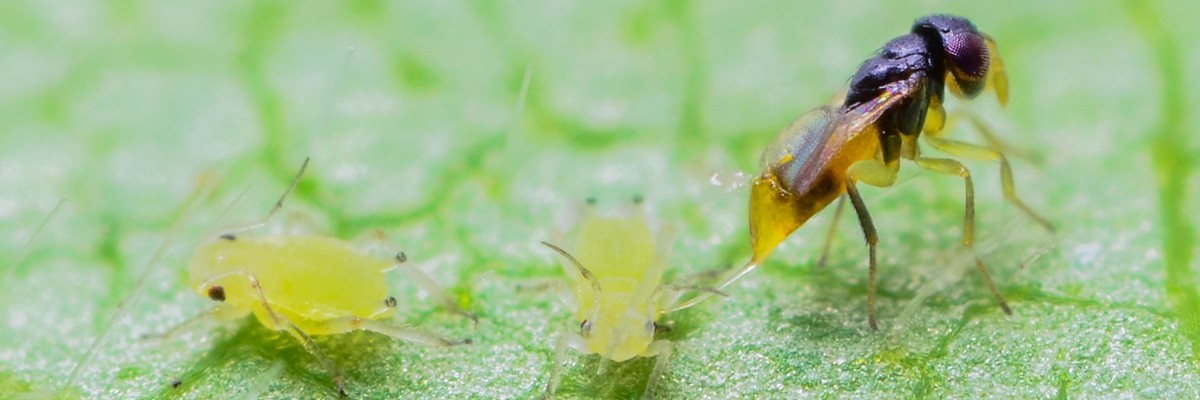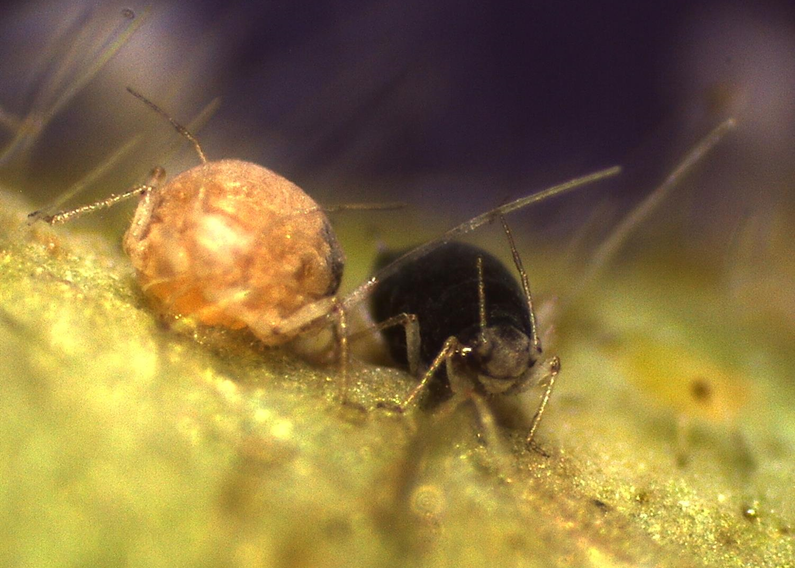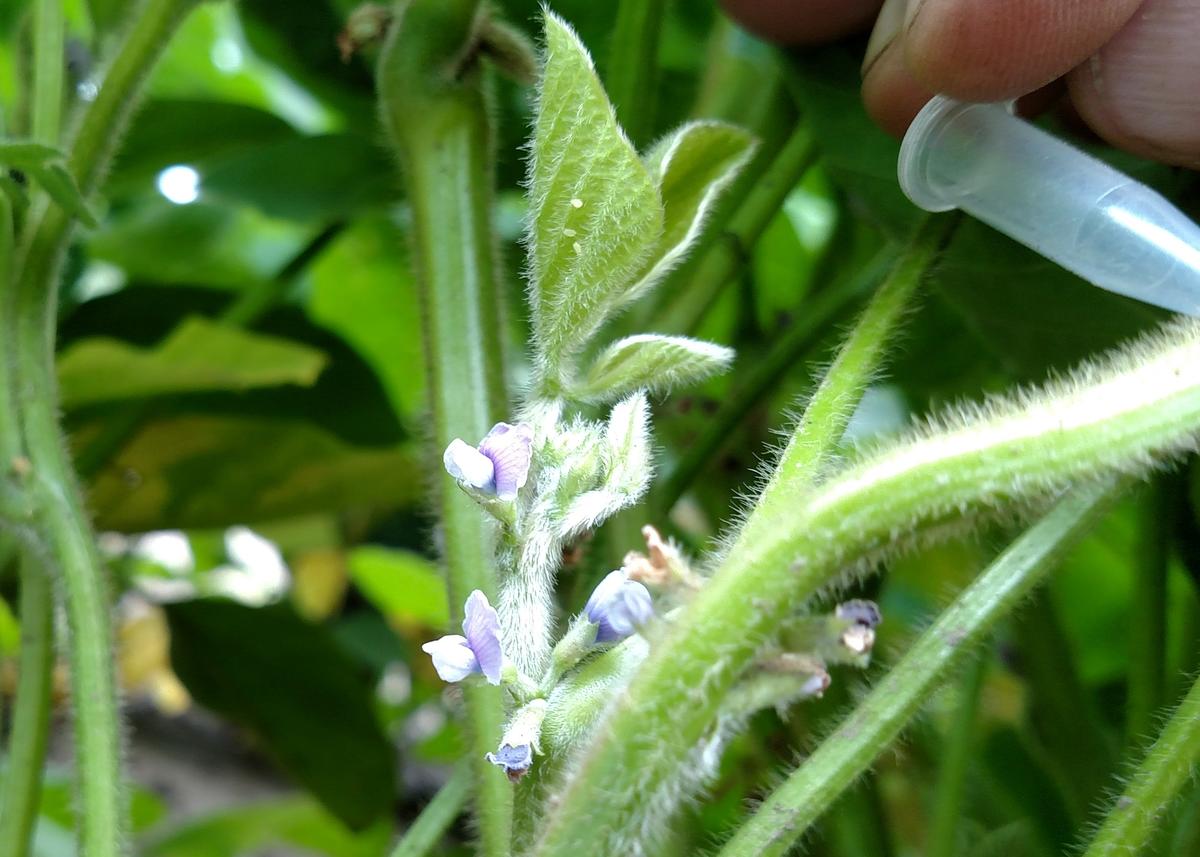
Parasitoids as biological control of the soybean aphid
The soybean aphid, Aphis glycines, is native to eastern Asia and was first detected in North America in the year 2000. Since then it has become the most important soybean pest in the North-Central United States and has led to a massive increase in insecticide use. In its native Asia, the soybean aphid is a sporadic pest at best and is attacked by numerous parasitoid species at high levels, while the native aphid parasitoids in North America provide very little suppression. We have therefore imported specialized soybean aphid parasitoids over the past 10 years but unfortunately without establishment. Recently though a parasitoid has established on its own (i.e. due to an accidental introduction) and seems to be providing substantial control of the aphid. We are studying these interactions and also determining to what extent biological control is protecting endangered butterfly species in Minnesota from insecticide applications aimed at the soybean aphid.


